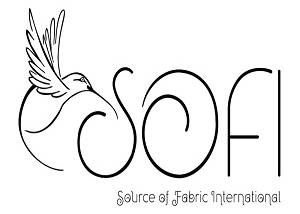Fleece is a popular fabric known for its softness, warmth, and versatility. But what is fleece made of, and why is it such a favorite in the textile world? In this article, we’ll delve into the materials and processes behind fleece, highlighting its key features and uses. Understanding these aspects can help you make informed choices for your projects, whether you’re crafting cozy garments or sourcing materials for wholesale.
The Basics: What Is Fleece Made Of?
Fleece is primarily made from synthetic fibers, with polyester being the most common. Polyester fleece is created through a chemical process that transforms petroleum into fibers, which are then woven into a soft, insulating fabric. This synthetic origin makes fleece an affordable and widely available material.
However, fleece isn’t limited to polyester. Other materials, such as polyethylene terephthalate (PET) and recycled plastics, can also be used. The use of recycled materials is a significant advantage, as it contributes to sustainability efforts by reducing waste and conserving resources.
The Manufacturing Process
To understand what fleece is made of, it’s essential to consider the manufacturing process. The production of fleece involves several key steps:
- Polymerization: The raw materials, often petroleum derivatives, undergo polymerization to create long-chain molecules. These molecules are then spun into fibers.
- Weaving and Knitting: The fibers are woven or knitted into fabric, which forms the base material.
- Brushing: The fabric undergoes a brushing process, where metal brushes raise the fibers, creating a fluffy, soft surface. This process not only enhances the texture but also increases the fabric’s insulating properties.
- Dyeing and Finishing: The fleece is dyed in various colors and treated with finishes that enhance its durability, water resistance, or other desired properties.
Types of Fleece
There are several types of fleece, each with distinct characteristics. These include:
- Microfleece: Known for its lightweight and thin texture, microfleece is ideal for layering and activewear. Despite its thinness, it offers excellent warmth and moisture-wicking properties.
- Polar Fleece: A thicker, warmer variant, polar fleece is perfect for cold-weather garments and blankets. It’s highly insulating and durable.
- French Terry Fleece: Featuring a smooth outer surface and a looped back, this type of fleece is often used for casual clothing like hoodies and sweatshirts.
- Sherpa Fleece: Characterized by its plush, fluffy texture, Sherpa fleece mimics the look and feel of wool. It’s commonly used for lining jackets and other outerwear.
Benefits of Fleece
Fleece offers several benefits, making it a popular choice for a wide range of applications. Some of these benefits include:
- Warmth: Fleece’s insulating properties make it an excellent choice for cold weather. It traps body heat effectively, keeping the wearer warm.
- Lightweight: Despite its warmth, fleece is lightweight, making it comfortable to wear and easy to pack.
- Breathability: Fleece is breathable, allowing moisture to escape and keeping the wearer dry. This feature is particularly useful for active wear.
- Durability: Fleece is resistant to shrinking and fading, ensuring that garments and items made from this fabric last longer.
- Versatility: From clothing to home textiles, fleece can be used in various applications. Its versatility extends to its availability in different weights, textures, and colors.
Caring for Fleece
Proper care can extend the life of fleece products. Here are some tips for maintaining the quality of your fleece items:
- Washing: Wash fleece in cold water on a gentle cycle to prevent damage. Avoid using fabric softeners, as they can reduce the fabric’s breathability.
- Drying: Air dry fleece whenever possible. If using a dryer, set it to a low heat setting to avoid overheating and damaging the fabric.
- Avoiding Pilling: Pilling, or the formation of small balls of fiber on the surface, can occur with fleece. To minimize pilling, turn the garment inside out before washing and avoid abrasive surfaces. Read More About What are the Four Techniques Used in Fabric Printing.
Conclusion
Fleece is a versatile and practical fabric, made primarily from synthetic fibers like polyester. Its unique properties, including warmth, lightweight, and breathability, make it a favorite for various applications. Whether you’re a consumer or a business looking for wholesale fabric supplier services, SOFI offers a range of high-quality fleece materials tailored to your needs. By understanding what fleece is made of, you can better appreciate its value and versatility, ensuring you make the best choice for your next project.


